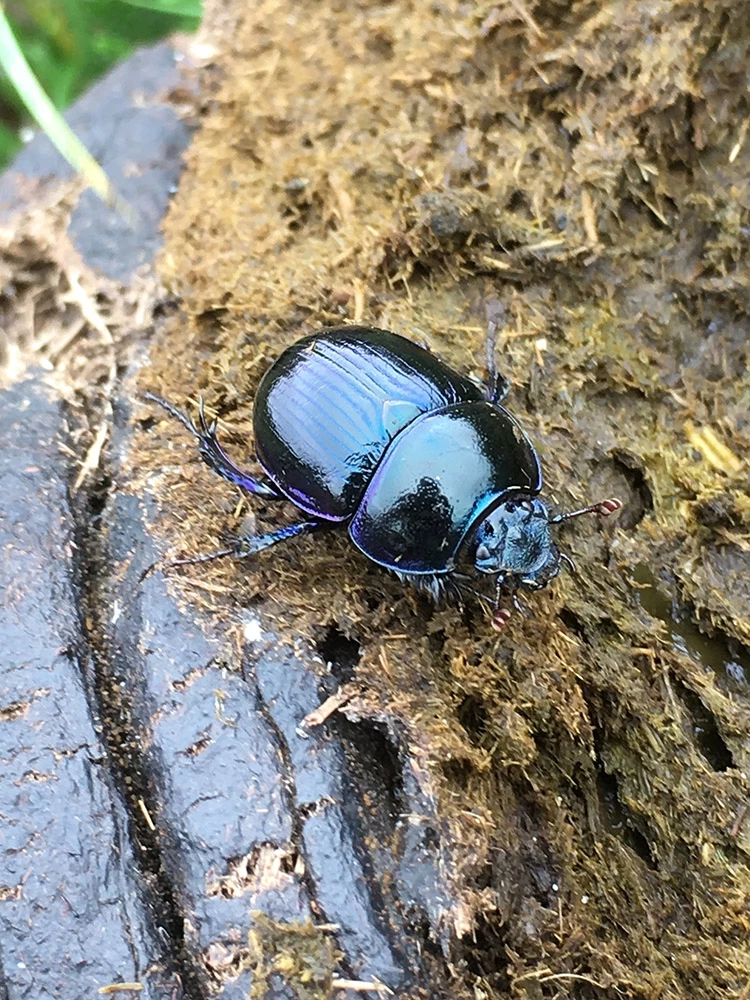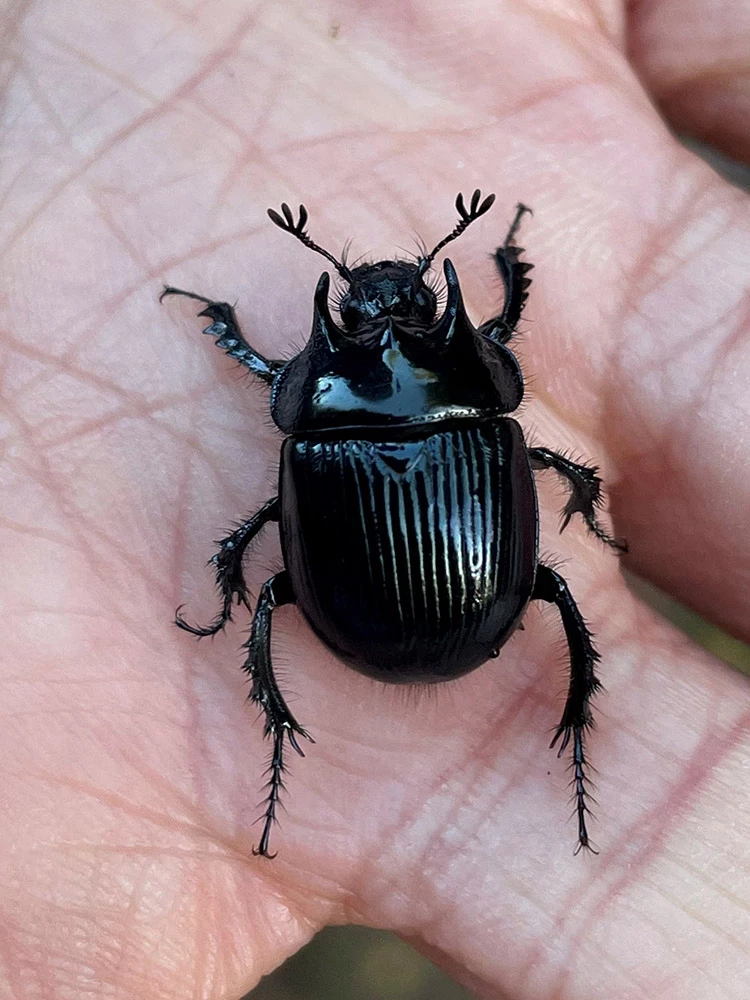
Discover the dung beetles of Bushy Park
Did you know that there are over 60 species of dung beetle in the UK?
Identify dung beetles
Thanks to the players of People’s Postcode Lottery, we are launching a new citizen science project in Bushy Park. Throughout 2023, The Royal Parks is conducting research on the park’s dung beetles and we are inviting you to get stuck in with us!
Join expert-led walks and surveys to learn how to identify and find dung beetles. No experience is required, just an enthusiasm to get your hands dirty (though gloves are provided).
How to get involved in our dung beetle survey
Become a volunteer citizen scientist and join us on a dung beetle survey. To get involved, you will need to register as a Royal Parks volunteer and sign up to the opportunity here.
No experience is required, all equipment and gloves are provided. You’ll learn all about dung beetles, how to find them, and help The Royal Parks collect important data. There are a range of tasks to suit everyone’s capabilities, such as dung searching, digging holes, writing down data, and labelling sample pots.
The next survey opportunities
| Thursday 12 October | 10:30am - 12:30pm | 1pm - 3pm |
| Thursday 19 October | 10:30am - 12:30pm | 1pm - 3pm |

Why are dung beetles important?
Dung beetles are an important provider of ecosystem services in the parks. Through burying, moving and eating dung produced by rabbits, deer and horses, they carry out ecological functions such as soil fertilisation, nutrient recycling, bioturbation and seed dispersal. Their clean-up operation also helps to reduce populations of biting flies and deer parasites. With over 300 deer present in the Bushy Park, a substantial amount of dung is produced each day, making Bushy Park a haven for dung beetles.
Across the country, populations of dung beetles are at risk of extinction from the loss of grazing animals and the use of anti-parasite medication in dung. Historically, dung availability in London was not an issue as parks, commons and pasture were regularly grazed by livestock, but in recent years many of these areas have been lost and as a result, dung beetle populations are declining.
Be on the look out for Minotaur Beetles
Bushy Park has a good population of Minotaur Beetles (so-named for the male’s bull-like horns). Minotaur beetles mainly feed on rabbit dung and nest in deep tunnels where they lay their eggs and provide dung for the larvae to feed on. Look out for these beetles in the autumn, where they can often be found wandering across paths.

Related Articles
-
 Read
ReadThe best nature walks in London
A selection of the best nature walks in London for you to enjoy
-
 Listen
ListenHelping Nature Thrive
In this episode, host Kristen Mueller delves into the many ways that we can help nature thrive in the parks.
-
 Read
ReadDiscover the trees of the Royal Parks
The 170,000 mature trees, young trees and shrubs within the Royal Parks are London’s living history. Use this guide to explore this fascinating history.